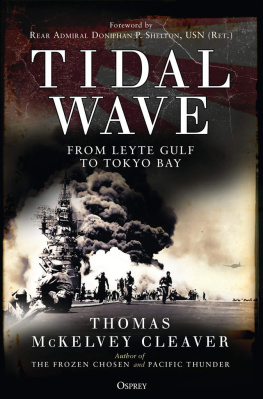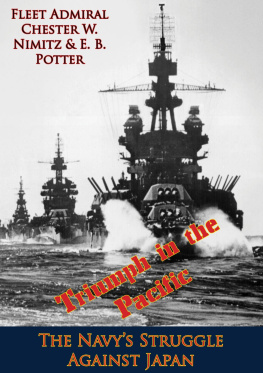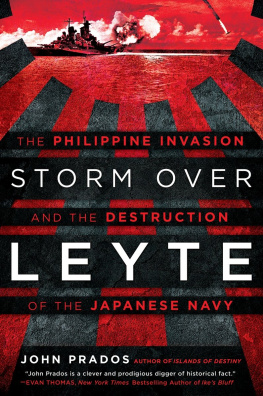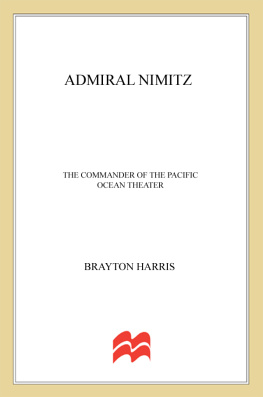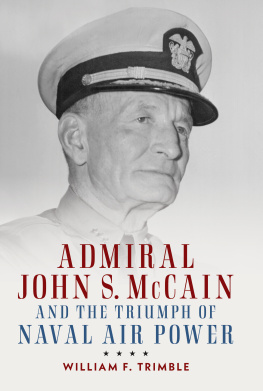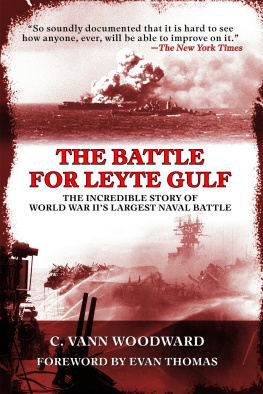Copyright 2016 by the President and Fellows of Harvard College
All rights reserved
Design by Dean Bornstein
Jacket credit: Bettmann/Corbis
Jacket designer: Jill Breitbarth
978-0-674-04963-5 (alk. paper)
978-0-674-96929-2 (EPUB)
978-0-674-96930-8 (MOBI)
The Library of Congress has cataloged the printed edition as follows:
Names: Hughes, Thomas Alexander, 1963 author.
Title: Admiral Bill Halsey : a naval life / Thomas Alexander Hughes.
Description: Cambridge, Massachusetts : Harvard University Press, 2016. | Includes bibliographical references and index.
Identifiers: LCCN 2015040172
Subjects: LCSH: Halsey, William F. (William Frederick), 18821959. | United States. NavyBiography. | AdmiralsUnited StatesBiography. | World War, 19391945Pacific AreaNaval operations, American.
Classification: LCC E746.H3 H84 2016 | DDC 359.0092dc23
LC record available at http://lccn.loc.gov/2015040172
THE WORLD WAR II naval hero Admiral Bill Halsey arrived at Fishers Island Country Club for his summer vacation on July 30, 1959. For years he had come to this sleepy islet three miles off the Connecticut coast near New London. The place soothed the old man, surrounded as it was by the seas he had plied his entire life. Swimming and reading filled days of relaxation, though he swam less vigorously than in summers past and cataracts complicated the reading. He took his suppers early, and he liked the fare simple. He was usually in his small but comfortable room by eight, asleep by nine. August 15 was like that, except, it being Saturday, he retired late from the parlor, where he enjoyed chatting with other guests. When he missed breakfast the next morning, the club manager went to his room. Halsey was unconscious. Shortly before noon, the sole physician on tiny Fishers Island pronounced him dead from an apparent heart attack. He was seventy-six years old.
Biography begins at the end, when judgments of a finished life are first possible. Within hours of Halseys death, President Dwight Eisenhower mourned the loss of a great natural leader. The next day the New York Times wrote of a man born to a naval career and of an inspiring leader of bold action. The Baltimore Sun called Halsey a sailors sailor whose formula for winning was simpleKill Japs, kill Japs, and kill more Japs. The Washington Post proclaimed Halsey a seadog of the old school. Known since his football days at Annapolis as Bull, he was square of jaw, pungent of speech, audacious in combat, and original in his approach to naval tactics. In each account, only Halseys intemperance at the Battle of Leyte Gulf, where he had abandoned an American invasion force to chase impotent Japanese aircraft carriers, had marred an otherwise brilliant career.
In the following days over 2,000 obituaries aped these characterizations. One columnist recounted Halseys monumental hatred of Japan, another called him swashbuckling, a third said he was the saltiest old salt of World War II. According to one widely circulated death notice, Halsey was the Nathan Bedford Forrest of the seasgetting there fastest with the mostest. A West Coast writer said Halsey seemed to violate all the traditional rules of naval warfare, and another championed the admirals daring, persistent, sometimes unorthodox way of thrashing the Japanese fleet clean out of the Pacific. These accounts repeated the same adjectives enough to constitute clich: sea dog, salty, aggressive, audacious. In them, Halsey was a fighting man from a Navy family, simple in outlook, fierce in temperament, and colorful in expression. He was a wartime symbol for American enmity toward Japan, a favorite among the rank and file, and his moniker, Bull, had aptly captured a brusque sailor with plenty of fight. He had descended from a long line of mariners, and his wartime service had concentratedon the positive side of lifes ledgeron carrier attacks at the wars outset and the struggle for Guadalcanal in 1942, andin the debit columnon fleet action at Leyte Gulf in 1944.
History followed obituary. Samuel Eliot Morisons multivolume account of the naval war framed Halsey as a hard-hitting sea commander, sometimes brilliant, sometimes intemperate. Sea Power, the basic text read by midshipmen at Annapolis for years, described Halseys ready courage in early carrier attacks and both praised and admonished his aggressive fleet command later in the war. In other leading books, Halsey was an admiral inclined toward boldness to the point of recklessness, the Navys fire eating answer to George Patton, a pugnacious and grizzled fighting admiral. Books prominently profiled the fighting admiral and clung stubbornly to, in the words of one, a garrulous, boozing Halsey. Clark Reynolds, in his seminal The Fast Carriers, presents as good an example as any of this common view: Halsey was a gifted leader, a bull whose limited intellect prompted careless charges around the ocean. Reynolds wrote that Halsey had at least as much salt water in his veins as any American naval officer of his generation and, by World War II, had personified the laymans vision of swashbuckling sea fighters.
Biography followed history. In 1946, Ralph Jordans Born to Fight repeated wartime accounts of seagoing exploits. In 1968, Chandler Whipple structured William F. Halsey: Fighting Admiral around what he claimed was Halseys motto: Attack, Repeat Attack. In 1974, Benis Franks Halsey promised more, but in most respects delivered less. Two years later, James Merrill published A Sailors Admiral, writing, Bill Halsey was not one of the Navys intellectuals, but he was a fighting admiral without peer. In 1985, E. B. Potters Bull Halsey, the best of the admirals biographies, nonetheless sprang from an image of witless bellicosity. The most recent biography, John Wukovitss Admiral Bull Halsey, published in 2010, never strays far from its first sentence: William F. Halsey came by his combativeness honestly, for belligerence had nourished a family tree spotted with sea dogs and sinners.
Popular culture followed history. In fiction, James Michener wrote of old Bull Halsey who had guts in Tales of the South Pacific, James Jones of the admiral who called the Japanese yellow-bellied monkey meat in The Thin Red Line, and Tom Clancy of fighting Bull Halsey in TheHunt for Red October. Hollywood mimicked this image in films such as From Here to Eternity, Midway, Pearl Harbor, and the one biopic devoted to Halsey,


